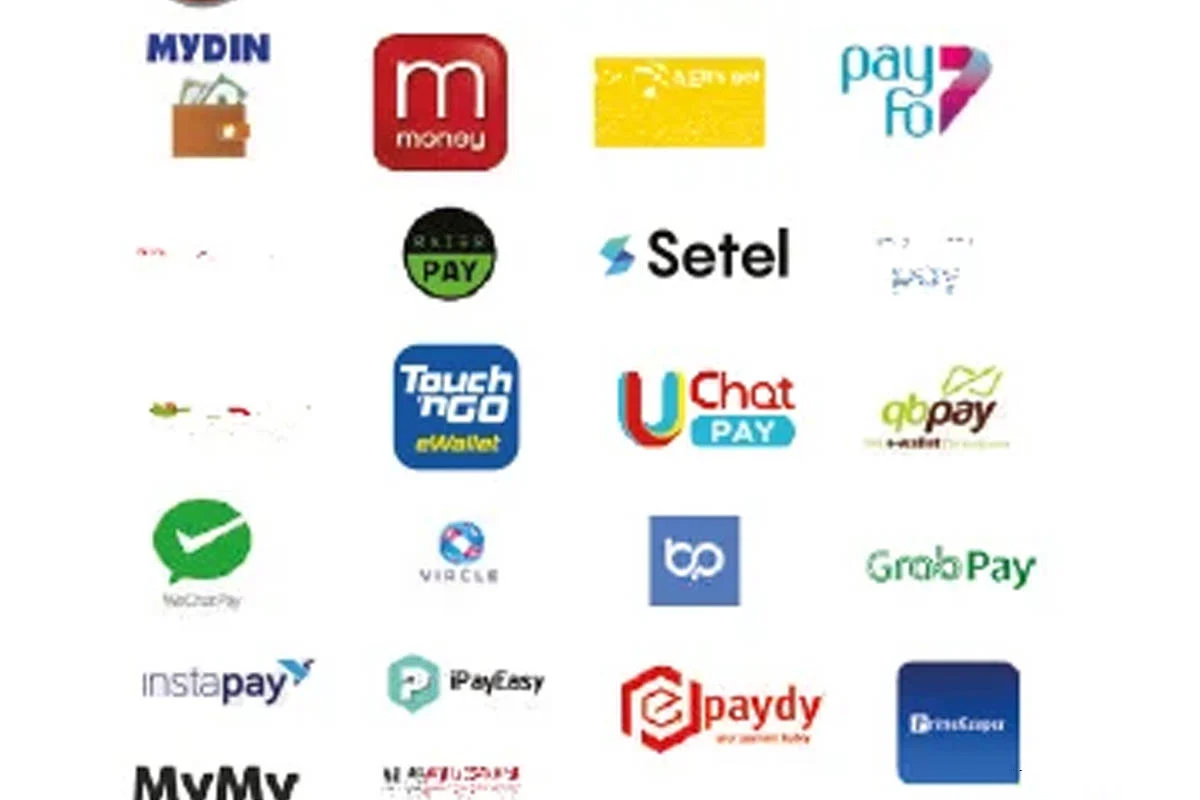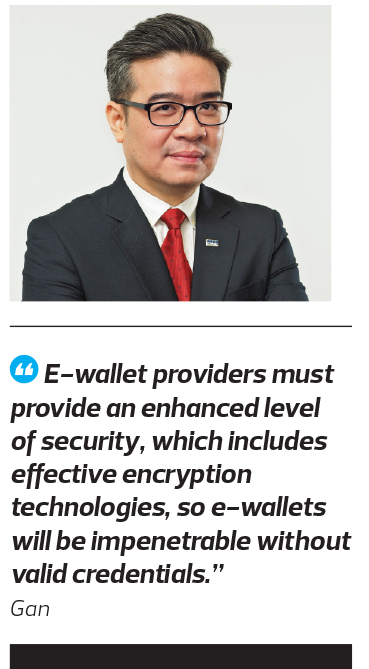
This article first appeared in Digital Edge, The Edge Malaysia Weekly on February 28, 2022 - March 6, 2022
Malaysia has experienced a tremendous uptake in the usage of digital payments for goods and services, especially for e-commerce transactions both in urban and secondary cities during the Covid-19 pandemic.
The growing adoption of digital payments, particularly mobile wallets, has largely been spurred by attractive incentives, says Yennie Tan, deals strategy partner and fintech commercial due diligence lead at PwC Malaysia. These include cashback deals, discounts and loyalty points, and government Covid-19 assistance programmes for the public through e-wallet disbursements. The situation has been boosted by the growing trend of cashless and contactless payment particularly among millennials and Gen X-ers.
While digital payments are expected to continue to grow significantly, the market is currently fragmented with more than 40 e-wallet licensed operators serving a small population of 32 million — not all of whom have fully embraced digitalisation — in Malaysia, she says.
“Most consumers have a primary wallet that is most frequently used, and one or two other wallets as secondary alternatives. This inevitably points to an imminent consolidation among the e-wallet operators, sooner rather than later,” Tan explains.
Alvin Gan, head of technology consulting for KPMG Malaysia, says across the consumer and business sectors, the trend towards digital channels and payment methods is an indication that traditional players have to gear their payment operations towards a more fluid and real-time world.
“As consumers, we are just looking for more convenience, and e-wallets can offer that by making one’s credit cards, cash and multiple mobile payment platforms available in a mobile device,” he says.
While consumers are spoiled for choice with 53 e-wallets — although not all are targeted at the retail market — to choose from, this does not bode well for the industry, given that most might not survive in the highly competitive and price-driven market.
PwC’s Tan says larger players that are supported by integrated ecosystems and channel partnerships will benefit from being able to provide a broader range of use cases to a larger customer and merchant base on their platforms.
Right now, the industry is seeing a segregation of the big players from the mid-sized and other players. On average, users utilise three to five platforms on a day-to-day basis, observes KPMG’s Gan.
The platforms that are in the lead have one thing in common: they are agile and nimble in the way they address consumer demands and are quick to adapt to ever-changing business requirements.
“Players ought to look at the entire value chain and start providing innovative services apart from traditional payment services. One thing is for sure, these payment methods and service providers are here to stay. Players that continue to evolve to meet the demands of today’s customers will be the biggest beneficiaries,” says Gan.
Not surprisingly, the usage of digital payments is presently highest among the age groups of 18 to 44 as these users tend to be more digitally savvy and have a higher preference to transact digitally, says Tan. Looking forward, she anticipates that these groups of users will continue to be the main addressable market for digital financial services.
Gan points out, however, that the older folks are arguably the ones with money to spend. So, although the current trend is to entice young consumers to get onto these platforms, providing solutions and making it accessible to the older generation is just as important.
Foreign workers cannot be ignored either, he adds. He believes the adoption rate will correspondingly increase as this demographic is constantly jumping from one platform to another in search of convenience.
“For example, certain digital platforms minimise the need for a third-party medium to transfer money from Malaysia to their home countries. Platforms like kiplePay and FGV’s e-wallet, which target foreign workers, helped spur the adoption rate further,” he says.
Tan concurs, adding that Malaysia has a sizeable migrant population of non-executive foreign workers, most of whom are underbanked or unbanked, and with limited access to banking services in the country.
“E-wallets have an opportunity to serve foreign workers by offering transparent and price-competitive digital remittance services, to enable them to remit funds back home more efficiently — for instance real-time transfers — and safely. This would encourage more of them to switch to digital remittance from traditional remittance,” she says.
Turbulence expected
The pandemic, coupled with the rapid growth of mobile phone penetration, has been a strong catalyst for digital finance. PwC’s Tan says among the trends seen is the growth of e-commerce, which accelerated the usage of buy now, pay later (BNPL) solutions for goods and services online, including content and gaming subscription.
Digital micro insurance — such as micro health and personalised motor cover — is gaining more traction among consumers too, given its flexibility and customisation to users’ needs during the pandemic through the pay-per-use model.
However, all these developments come with challenges. As with most developing countries, factors such as a high unbanked population and limited internet connectivity in the rural areas, undeveloped and fragmented payment infrastructure and low trust in electronic payments remain prevalent here, says KPMG’s Gan.
“E-wallet providers must provide an enhanced level of security, which includes effective encryption technologies, so e-wallets will be impenetrable without valid credentials. That being said, measures must be put in place to provide some form of verification before a transaction or payment can be made,” he adds.
Another key challenge is the need for continuous investments and financial incentives to grow market share, retain users and encourage usage on the app. Tan says given the proliferation of digital wallets in the market, smaller players with less financial strength may struggle to compete without a clear unique proposition that differentiates them from the super apps and fintech apps.
“Efforts to grow to scale may result in significant cash burn with no clear pathway to profitability [or] to sustain the business in the longer term,” she adds.
Consolidation and M&A?
With over 50 players in the market, consolidation in the form of partnerships is inevitable.
“We have already seen partnerships formed between e-wallet and digital payment providers and other financial institutions such as insurance companies and traditional banks,” says Gan.
Notwithstanding, segregation between larger and smaller players will become more apparent. Smaller players will be part of the ecosystem serving niche markets, he adds.
“For example, certain malls in Malaysia have introduced their own platforms catering for their regular shoppers. A simple way of looking at it is as a tier of players, where tier 1 encompasses super apps, which are one-stop centres to provide key services and products; tier 2 comprises larger apps; and tier 3 are the ones that focus on niche segments. As long as the demand is there, players big and small will be able to sustain themselves.”
As digital payment solution providers are crucial to Malaysia achieving a transformation in its digital economy — which is estimated to contribute 25.5% to the country’s GDP by 2025 — it is essential that every phase of its development is well executed.
Gan points out that planning the initiatives for the next 10 years was the easy part. The execution and implementation of these initiatives will be key, as most of the e-wallet and digital payments-related programmes and plans identified involve every facet of Malaysian society, not just the public and private sectors.
“It is fundamental to get the onboarding process and coordination right. If executed well, there is no doubt growth in this space will put the country’s economy on the right track, as intended in the MyDigital blueprint,” says Gan.
Save by subscribing to us for your print and/or digital copy.
P/S: The Edge is also available on Apple's App Store and Android's Google Play.



